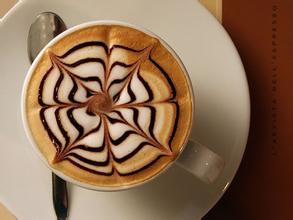Basic knowledge of Coffee Culture

A comfortable and playful hanging chair, a noble and elegant piano, a variety of display cabinets, and a warm and elegant mural can create a moving atmosphere. Duan Fei raised the coffee culture to the spiritual realm completely with the gentleness and sensitivity of women.
In this atmosphere, holding a cup of mature and bold "Blue Mountain" or rich "milk special" or concise and open-minded "iced coffee", scattered on the table with some fashionable or traditional books, or melodious jazz or romantic pop music, constitute a fashionable picture of Beijing coffee culture.
According to the survey, the coffee volume in China is increasing at an annual rate of 10%, making it the most potential coffee consumer in the world. In contrast, Shanghainese accept coffee much more than Beijingers.
For its reasons, Ms. Wang, who once lived in Japan and studied coffee, analyzed that: "Shanghai and Beijing have different cultural backgrounds, people's concepts are also different, different regions, different people, understanding of coffee culture is different."
In Beijing, because it is not only the political and cultural center but also the ancient capital of civilization, it has rich cultural deposits, which determines that when it faces the invasion of new things from abroad, it will inevitably judge the situation strictly, sometimes even almost harshly.
The same is true for coffee culture. At the beginning of its introduction, people of insight in Beijing positioned it as a white-collar culture,"stubbornly" integrating coffee culture with high literacy and high income, believing that only in this way can coffee culture be best interpreted.
On the other hand, coffee fans in Beijing like to use all fashionable and tasteful things to set off the elegance of coffee. From this, there was a Tiannuo Internet Cafe and a Carving Time Cafe.
In Japan, cafes of different sizes and styles are set up for people of different ages and classes. They believe that coffee belongs to everyone, including the elderly, children, rich and poor, and everyone has the right to enjoy coffee and feel its culture.
Similarly, in Shanghai, because people have a strong ability to accept new things, especially young people, they like to experience new things and new cultures, as long as they think they are good.
Feel the inner charm of coffee
Unlike other industries, despite fierce competition, Beijing's coffee "owners"(mainly private coffee shop owners in Beijing) have no "fighting consciousness". Instead, they gather every three or five times in a newly opened coffee shop to sip coffee and talk about experiences. That's the charm of coffee, an irresistible cohesion.
Of course, from the operator's point of view, they have been trying their best to create their own characteristics, through the visual, auditory, taste and other sensory stimulation of customers, the use of pervasive coffee culture to capture consumers "heart", the use of coffee culture to bring out corporate culture, so as to achieve the operator and consumers "mutual affection"-operators get profit satisfaction, consumers feel the charm of coffee.
Coffee, books and music seem to blend so harmoniously that coffee is the thread that runs through cultures. A cup of fragrant "mocha"+ a classic + a soothing piano music; a cup of "cappuccino"+ a fashion magazine + a pop song, these different styles of collocation, can create a small coffee shop solemn, casual, warm and other different cultural atmosphere-the cultural atmosphere endowed by coffee.
Yao Yanying's coffee culture is that "everything related to coffee, including brewing process, equipment, atmosphere and even competitive environment, contains rich coffee culture, and the 'white collar' here is to experience this culture." In fact, this word also expresses the true meaning of coffee culture.
Whether it is Starbucks in the United States, UCC in Japan, or "Coffee Tea" in China, they all hope to show coffee culture in front of people in the simplest and most comprehensive way. A spoon, a coffee pot, a coffee table, or even a coffee bean can tell people about the culture and taste of coffee.
Important Notice :
前街咖啡 FrontStreet Coffee has moved to new addredd:
FrontStreet Coffee Address: 315,Donghua East Road,GuangZhou
Tel:020 38364473
- Prev

Coffee culture in China is full of every moment of life
According to historical records, coffee was first planted successfully in Taiwan in 1884, thus opening the prelude to the development of coffee in China. The earliest coffee cultivation in China began in Yunnan Province in the early 20th century when a French missionary brought the first batch of coffee seedlings to Binchuan County in Yunnan Province. In the next hundred years, coffee cultivation in the vast territory of China is only a speck. However, in recent years
- Next

10 kinds of coffee drinks that are common in the common sense of fine coffee
The coffee on the market is mainly divided into two original species: Coffee Arabica and Coffee Robusta. 1. Black coffee (Black Coffee) ── directly uses coffee beans to make coffee, without adding milk, it will affect the way the coffee is drunk. two。 White coffee (White Coffee) ── adds milk to the coffee. 3. Espresso (Espresso) ──
Related
- Beginners will see the "Coffee pull flower" guide!
- What is the difference between ice blog purified milk and ordinary milk coffee?
- Why is the Philippines the largest producer of crops in Liberia?
- For coffee extraction, should the fine powder be retained?
- How does extracted espresso fill pressed powder? How much strength does it take to press the powder?
- How to make jasmine cold extract coffee? Is the jasmine + latte good?
- Will this little toy really make the coffee taste better? How does Lily Drip affect coffee extraction?
- Will the action of slapping the filter cup also affect coffee extraction?
- What's the difference between powder-to-water ratio and powder-to-liquid ratio?
- What is the Ethiopian local species? What does it have to do with Heirloom native species?

